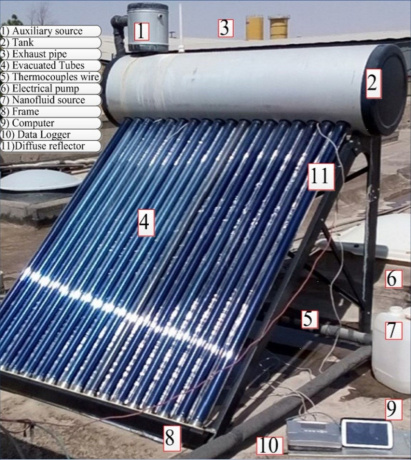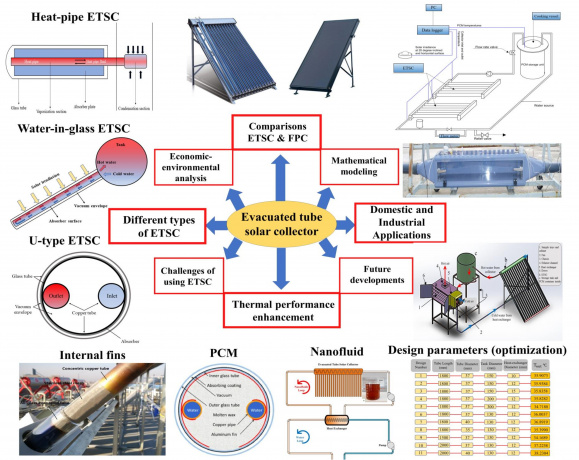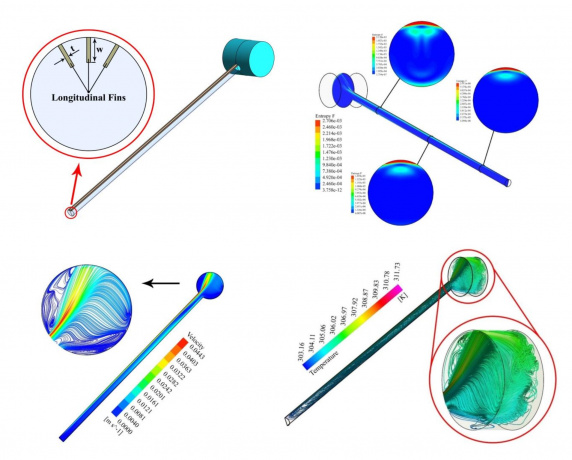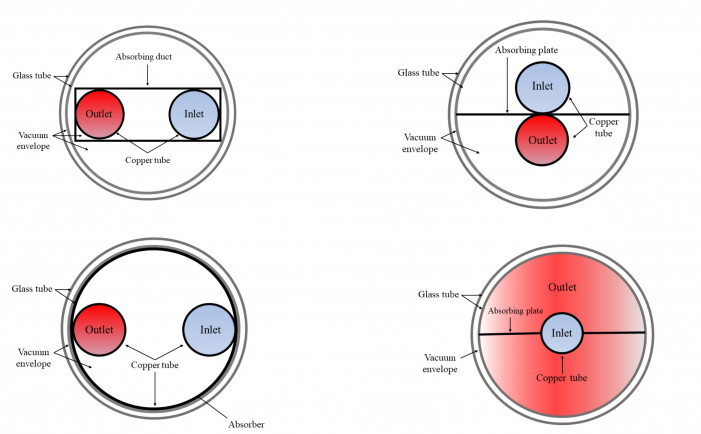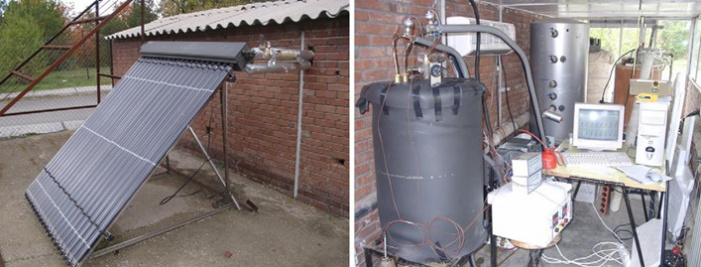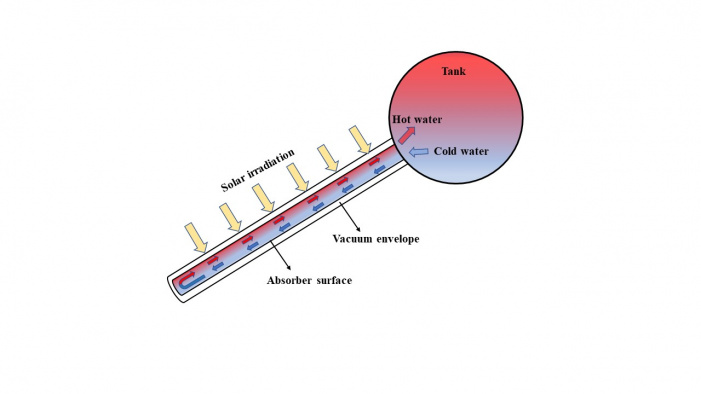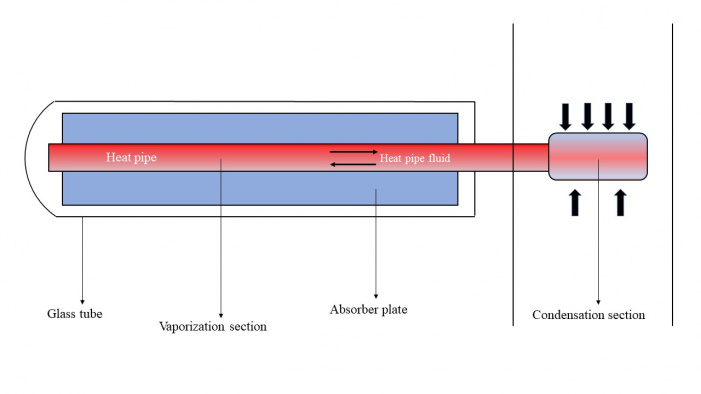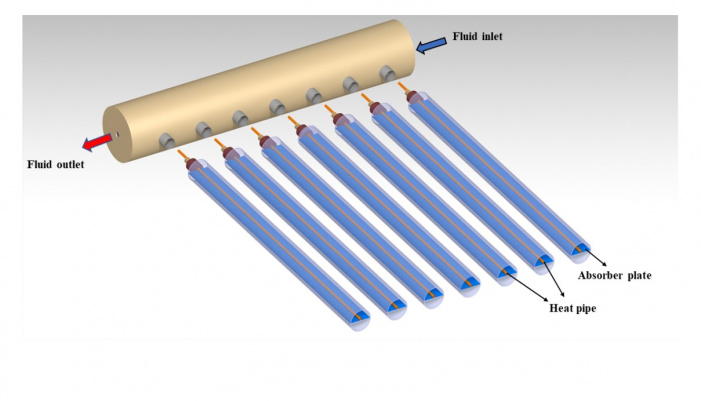Evacuated Tube Solar Collector (ETSC)
Evacuated Tube Solar Collectors
In today’s world, solar energy plays the most pivotal role in providing energy demand among all renewable energy resources. Hence, significant advances are being made to harness solar energy by using ever-evolving technologies such as solar collectors. Evacuated tube collectors have been in the center of attention due to high thermal efficiency and desirable performance in unfavorable weather conditions.
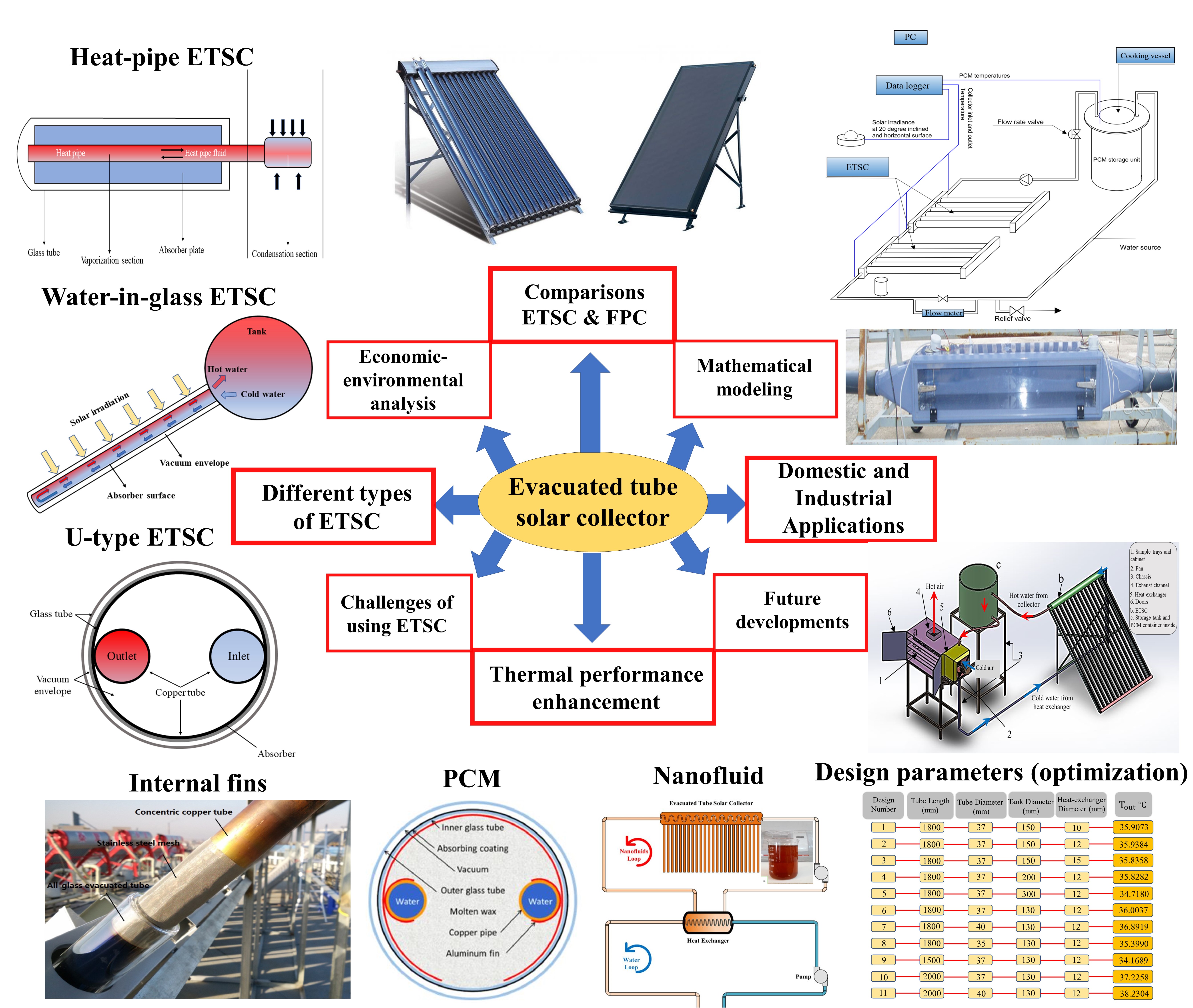
Aims and objectives of our research
Evacuated tube solar collectors are widely used with the primary intention of hot water production due to convection and radiation's low heat dissipation. Thus, a significant modification can be performed on the conventional structure of the collector, and several innovative methods can be proposed to diminish heat loss and enhance the system's thermal efficiency. Overall, the studies over evacuated tube collectors are fixated on analyzing diverse variables affecting the thermal performance of the system, including the structure of the collector (e.g., tilt angle, tube length, tank shape), types of working fluid (e.g., nanofluid), heat absorption systems (flat reflector, compound parabolic concentrator, incident angle modifier, etc.), and heat storage process (e.g., phase change materials, selective coating materials, fins, twisted tape, etc.). This proposal aims to examine the most influential elements in the collector's thermal performance and propose several innovative ideas for the structure of the system and the variables mentioned above.
Technical challenges of evacuated tube solar collectors
The imperative technical challenges of the evacuated tube collectors and the solutions on which this proposal is fixated are as follows:
- The first and perhaps the most important challenges in these systems stem from the heat transfer enhancement within the absorber tubes to increase the system's thermal efficiency. To facilitate heat transfer augmentation, utilizing heat transfer materials inside the absorber tube can be a dependable strategy intending to enhance the heat transfer surface and improve the collector's performance. In the proposed system, longitudinal fins were added inside the absorber as the promising approach for the problem of slow heat transmission through the tube. The heat transfer coefficient and the mean temperature of the tank need to be investigated to evaluate the competence of adding fins.
- Another key factor that profoundly impacts the thermal functionality of the system originates from its inferior performance during off-peak hours of sunlight. In other words, in the lack of access to solar radiation, the system is incapable of producing hot water during the night, particularly for domestic applications. In this regard, making use of phase change materials (PCM) can be a pragmatic solution owing to minimizing heat dissipation, increasing the collector’s lifespan, and cost reduction. Thus, integrating PCM with evacuated tube collectors has the potential to keep the water temperature at a constant value for domestic utilization. Notably, the low thermal conductivity of PCMs can lead the thermal efficiency of the system to reduce; hence, a viable solution needs to be suggested for phase transition intensification of PCM.
- Another inherent weakness in such a system is the shaded region of evacuated tubes that are not directly exposed to solar radiation and engenders the irregular transmission of thermal energy to PCM, which results in an incomplete melting process. This problem can be expeditiously solved by utilizing different parabolic reflectors beneath the tubes. Utilizing parabolic concentrators may enhance the overall cost of the system; therefore, to use a thermally efficient and cost-effective reflector, various parameters such as the size, shape, and eccentric distance of parabolic concentrators can be precisely assessed as the vital dependent variables influencing the thermal efficiency of the system.
Innovations for thermal performance improvement of ETSCs
Evacuated tube solar collectors are widely used with the main intention of producing a higher temperature of water owing to low heat dissipation derived from convection and radiation. Thus, a major modification can be performed on the conventional structure of the collector and several innovative methods can be proposed to diminish heat loss and enhance the thermal efficiency, but before that, there are multiple drawbacks and technical challenges which are requisite to be identified and taken into account to improve the thermal performance of the system. In recent years, research on evacuated tube collectors was fixated on improving the thermal performance of the systems. The principal objective of our research is to describe innovations by which the thermal performance of ETSCs can be improved. Innovations for thermal performance enhancement are divided into four classes. Heat transfer materials, design parameters, phase change materials, and working fluids are the primary focuses of recent studies aimed at improving the functionality of ETSC.
